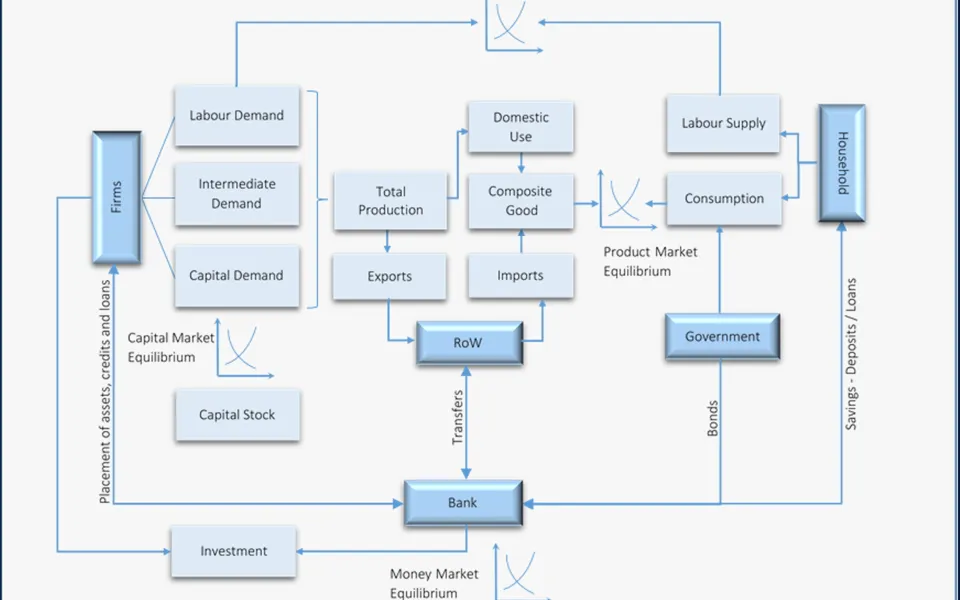
Ricardo's macroeconomic model cited as 'leading tool' for analysing industrial transformation
18 Jun 2024
A macroeconomic model owned by Ricardo has been named as the leading tool for analysing industrial transformation in a new study published in Renewable and Sustainable Energy Reviews, a peer-reviewed scientific journal.
From a survey of more than 60 different models, the General Equilibrium Model for Economy-Energy-Environment (GEM-E3) topped a final ranking of four shortlisted products, with the paper concluding it demonstrated the strongest alignment with study’s criteria across Industrial/ Sector representation, Technological change, Employment and the Environment.
In particular, the authors cited GEM-E3 for its ‘ability to provide a thorough display of the interlinkages between economy, environment, and energy system’, and its unique environmental module that 'provides an opportunity to explore a variety of emission reduction and trading policies’.
The report and its findings were published in Elberry, A. M., Garaffa, R., Faaij, A., & van der Zwaan, B. (2024). A review of macroeconomic modelling tools for analysing industrial transformation. Renewable and Sustainable Energy Reviews, 199, (click here to access).
State-of-the-art tool across economic, environmental and energy systems
Large scale applied macroeconomic models are used to analyse the potential impacts of long-term climate and energy policies on the wider economy.
When analysing how policies affect industrial competitiveness and transformation, the models must take into account the full dynamics of the system and associated feedback loops, providing insight to policy makers by mapping the interdependencies and offering quantified estimates on their impact on key indicators such as GDP, household income, wages, employment, taxation, imports and exports, terms of trade, dependence on raw materials and local resources.
GEM-E3 is developed, maintained and provided by E3 Modelling (E3M), a team within Ricardo specialising in economy, energy, environment and transportation state-of-the-art modelling services.
It was originally developed in the 1990s by a group of academic institutions led by the National Technical University of Athens. Since then, the E3M team has continuously upgraded and broadened its capabilities, particularly its strengths in analysing the increasingly integrated links between economic, environmental and energy systems. Clients include National governments, industrial associations, energy intensive industries and agencies of the European Commission.
The tool is widely used for national and international policy analysis and impact assessments, with recent assignments including such as energy taxes implications, labour force role in economic development, and the effects of emissions reduction policies in local economies.
For more information about E3M and the GEM-E3 model, visit https://e3modelling.com/modelling-tools/gem-e3/




 Follow Ricardo plc for regular updates
Follow Ricardo plc for regular updates




